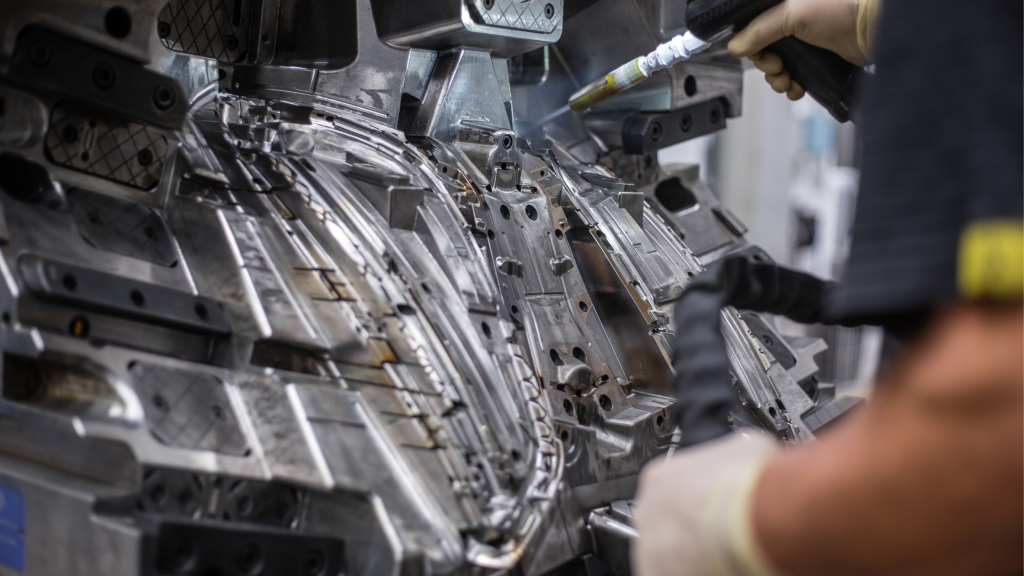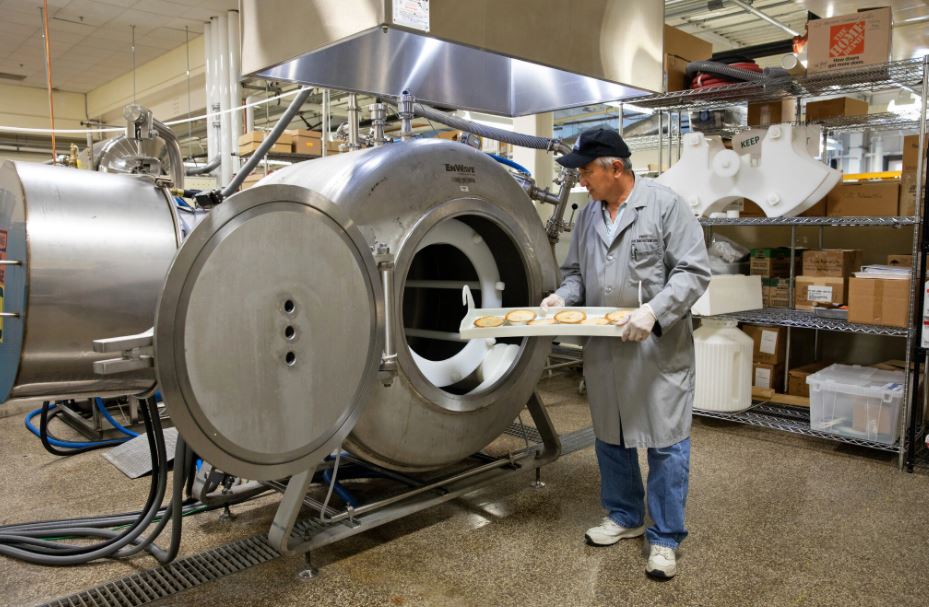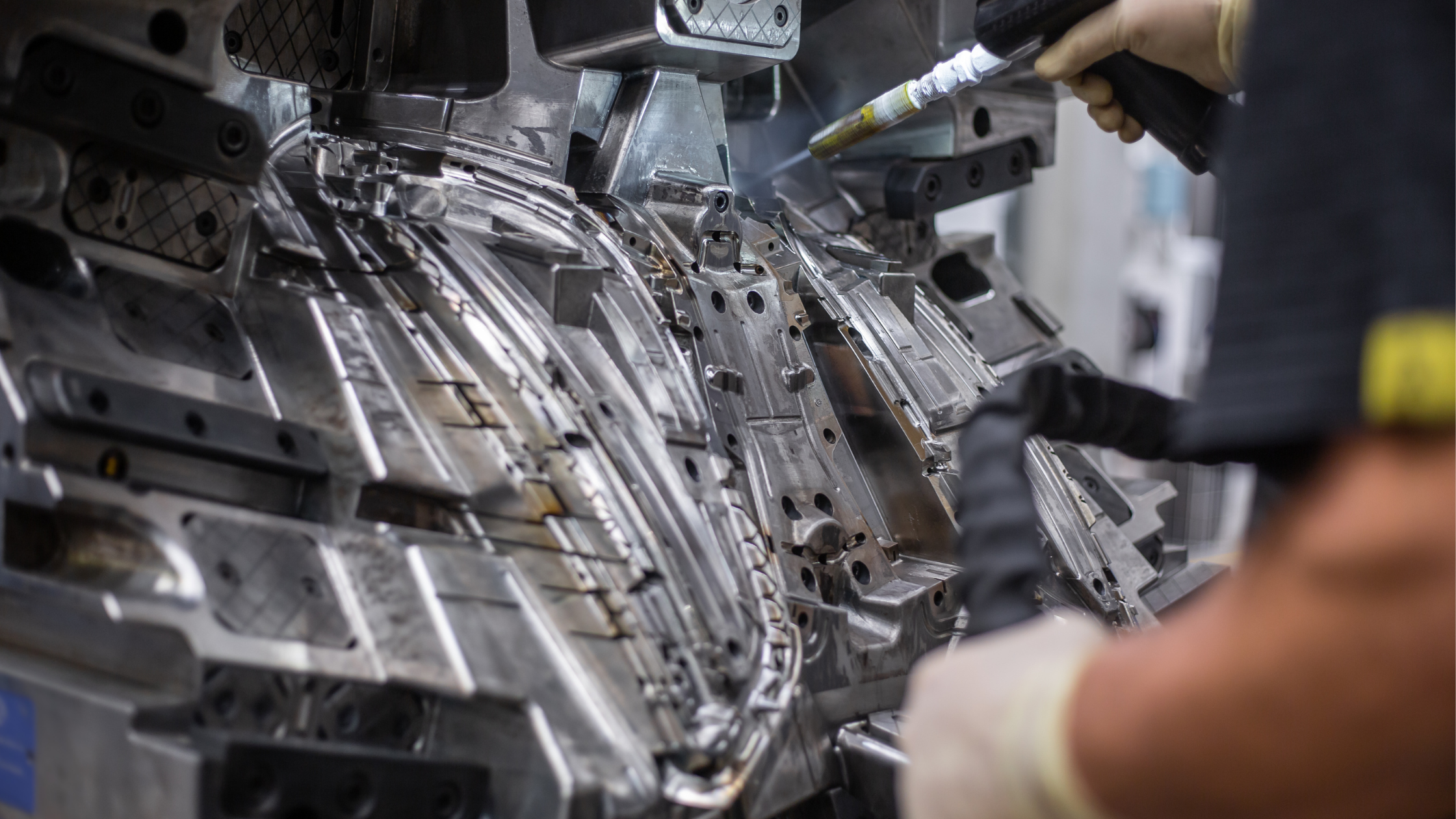Is freeze drying sustainable?
As the food industry evolves, sustainability is no longer a buzzword. Companies, consumers, and regulators are all seeking new ways to reduce environmental impact while maintaining product quality. Freeze drying, a method long favored for preserving everything from fruit snacks to pharmaceuticals, is often touted as a sustainable solution. But how does it really stack up? And can newer technologies like microwave dehydration offer a better path forward for commercial food drying, product development, and food innovation?
Let’s take a closer look at the environmental impact of freeze drying, the regulatory trends shaping the food tech landscape, and how microwave drying equipment can help companies achieve their sustainability goals.

The sustainability case for freeze drying
Freeze drying (also known as lyophilization) has become a staple in food processing and product innovation, especially for companies seeking to extend shelf life and preserve nutritional value without relying on additives or preservatives. This method removes water from food by sublimation, turning ice directly into vapor under low pressure, which helps retain color, shape, nutrients, and flavor.
Environmental benefits
- Reduced food waste: By dramatically extending shelf life, freeze drying helps reduce the amount of food that spoils before it can be consumed or sold. This is a major win for sustainability, as food waste is a significant contributor to greenhouse gas emissions.
- No need for refrigeration: Freeze-dried products are shelf-stable and don’t require cold storage or transport. This lowers energy use and carbon emissions compared to frozen or refrigerated foods.
- Lightweight products: Removing moisture reduces food weight by 70–90%, cutting shipping costs and the environmental impact associated with transportation.
- Minimal packaging waste: The compact nature of freeze-dried foods often means less packaging is needed, further reducing waste.
Energy considerations
Despite its advantages, freeze drying is energy-intensive. The process requires specialized commercial freeze dry machines and industrial freeze dryers that consume significant electricity, especially during the initial freezing and vacuum phases. The environmental impact depends on the energy source, renewable energy can help mitigate this, but not all facilities have access to green power.
Advancements in freeze drying technology are improving efficiency, and some companies are adopting more sustainable packaging to further reduce their environmental footprint.
Regulatory trends and consumer expectations
Sustainability is increasingly at the forefront of food industry regulation and consumer demand. Governments worldwide are implementing stricter guidelines on energy consumption, packaging waste, and carbon emissions. Companies using commercial freeze drying or industrial freeze machines are under pressure to demonstrate eco-friendly practices and transparency in their supply chains.
Consumers, too, are more aware than ever. They’re looking for clean-label products, minimal additives, and brands that prioritize environmental stewardship. Eco-certifications and transparent reporting on sustainability initiatives are becoming key differentiators in the market.
The limitations of freeze drying
While freeze drying offers clear sustainability benefits compared to some traditional methods, it’s not without drawbacks:
- High energy use: The process is more energy-intensive than air drying or some other dehydration methods, especially on a commercial or industrial scale.
- Processing time: Freeze drying is slow, often taking 24 hours or more per batch, which can limit throughput and flexibility for product development and food innovation.
Microwave Dehydration
As sustainability standards rise, companies are exploring alternatives that can deliver the same, or better, results with a smaller environmental footprint. Microwave dehydration is emerging as a compelling option for commercial food drying, especially when speed, energy efficiency, and product quality are top priorities.

How microwave drying works
Microwave dehydration, especially in a vacuum (as with EnWave’s REV™ technology), uses microwaves to rapidly heat and remove water from food at low temperatures. This process preserves nutrients, flavor, and texture while dramatically reducing drying times, from days to mere hours or even minutes.
Environmental advantages
- Lower energy consumption: Microwave drying is significantly faster than freeze drying, which means less energy is used per batch. The vacuum environment further improves efficiency by lowering the temperature needed for drying.
- Reduced carbon footprint: Faster processing and lower energy use translate directly into lower greenhouse gas emissions, helping companies meet regulatory targets and sustainability goals.
- Minimal product loss: The gentle, controlled process minimizes nutrient loss and maintains product quality, supporting food innovation and the development of premium dried fruit snacks, dairy products, and more.
- Versatility: Microwave drying equipment can handle a wide range of products, from fruits and vegetables to proteins and botanicals, making it a flexible solution for commercial food processing and product development.
Economic and Operational Benefits
- Faster turnaround: Go from fresh to dry in hours, not days, enabling rapid response to market trends and reducing inventory costs.
- Smaller footprint: Microwave drying systems often require less floor space and infrastructure than traditional freeze drying setups, making them ideal for both established manufacturers and startups focused on food tech.
- Consistent quality: Advanced moisture control and closed-loop systems ensure every batch meets high standards for color, flavor, and nutritional value.
Meeting sustainability goals with Microwave Dehydration
For companies aiming to lead in food innovation and sustainability, microwave dehydration offers a clear path forward. Here’s how it supports key sustainability objectives:
- Energy efficiency: By slashing drying times and operating at lower temperatures, microwave dehydration reduces overall energy consumption (a critical factor in lowering operational costs and environmental impact).
- Reduced food waste: Faster processing means fresher products and less spoilage during production, storage, and transport.
- Enhanced product development: The ability to quickly test and scale new products supports ongoing innovation, helping brands respond to changing consumer preferences and regulatory requirements.
- Support for circular economy: Lightweight, shelf-stable products enable more efficient logistics and less packaging waste, supporting broader sustainability initiatives across the supply chain.
EnWave’s REV™ Technology
EnWave’s vacuum microwave dehydration is already making a difference for leading brands worldwide. Companies like Dole, Dairy Concepts IRL, and BranchOut Foods have leveraged EnWave’s technology to create nutrient-dense snacks, dairy products, and specialty ingredients with a focus on both quality and sustainability.
REV™-dried products retain vibrant colors, flavors, and nutrients, without additives or preservatives. The technology’s rapid processing and energy efficiency have helped partners reduce their environmental footprint, lower costs, and deliver innovative products to market faster.
Choosing the right drying technology
When evaluating commercial freeze drying, industrial freeze dryers, or newer microwave drying equipment, it’s crucial to consider both environmental and business impacts. Freeze drying remains a valuable tool for extending shelf life and reducing food waste, but its energy intensity and slow processing times present challenges for companies focused on sustainability and efficiency.
Microwave dehydration, particularly under vacuum, offers a powerful alternative. By combining speed, energy savings, and exceptional product quality, it helps companies in food processing, product innovation, and food tech meet the demands of today’s market, while supporting a more sustainable future.
Ready to Innovate?
If you’re looking to reduce your environmental footprint, accelerate product development, and deliver premium dried foods that consumers love, it might be time to rethink your approach to food dehydration. Explore how microwave dehydration can transform your operations and help you lead the way in sustainable food processing.
For more information on EnWave’s REV™ technology and how it can support your sustainability goals, contact us.
Further Reading:
- Feeding the future: The power of freeze-drying innovation – GEA
- Sustainable Development in Freeze-Dried Food Production: Eco-Friendly Practices
- The Environmental Impact of Freeze Drying
- How is microwave dehydration changing the food industry
- EnWave Corporation
- Vancouver-based EnWave’s microwave dehydration technology


